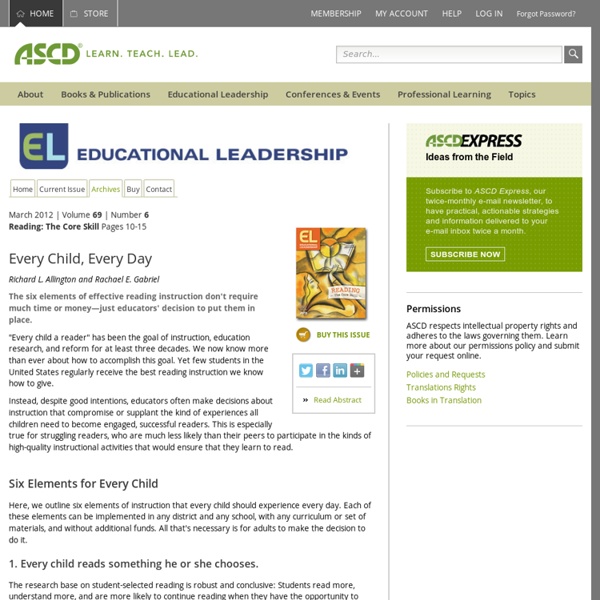



Creating Fluent Readers Defining reading fluency may help clarify the issue. Successful reading requires readers to process the text (the surface level of reading) and comprehend the text (the deeper meaning). Reading fluency refers to the reader's ability to develop control over surface-level text processing so that he or she can focus on understanding the deeper levels of meaning embedded in the text. Reading fluency has three important dimensions that build a bridge to comprehension. Assessing Reading Fluency Teachers can easily assess each of the three dimensions of reading fluency. Teachers can normally assess automaticity in decoding by looking at the student's reading rate. The best way to assess prosodic reading is to listen to a student read a grade-level passage and to then judge the quality of the reading using a rubric that scores a student on the elements of expression and volume, phrasing, smoothness, and pace (see fig. 1, p. 49). Figure 1. Teaching Reading Fluency Confusing Fast with Fluent
Bokomslag på bloggen – vad får man publicera? Hur är det egentligen med upphovsrätten på bokomslag? Får man publicera ett bokomslag hur man vill på sin blogg? Webbstjärnan har undersökt saken och svaren är många. Efter supportsamtal med en lärare som driver en bokblogg visar det sig att samtliga förlag nedan tillåtit henne att publicera bokomslag i samband med bokrecension. Vi på Webbstjärnan har märkt att det är många bidrag som innehåller bokrecensioner, och i vissa fall är de rena bokbloggar. Vi började fundera på hur det ligger till med upphovsrätten till de bokomslag som ofta publiceras i samband med bokrecensioner. Enligt Norstedts förlagsgrupp (där bland annat Rabén & Sjögren ingår) är det fritt fram att publicera deras bokomslag på sin sajt utan att be om tillstånd, så länge omslaget ”återges i anslutning till en recension”. Bonnierförlagens böcker är det lite knepigare med. Svenska Förläggareföreningen, som är en branschorganisation för svenska bokförlag, är inne på samma spår. Vi vet att det här låter knepigt.
Learning to Love Reading in 30 Minutes It was always so imbarising reading at a 3rd grade level in 7th grade, it wasn't right, wasn't natural. No one had ever cared enough to help me. When the kids laughed at me trying, sports were the only thing I could count on. Till one morning, "Hi my name is Mrs. D. and we are starting a new program to help you read better." Kenna, the toughest girl on our school basketball team, started the school year hating reading. Kenna was typical of many of the students I inherited in fall 2007 when I left my secure world of elementary students to teach at Moffat Middle School, a tiny rural school at the base of the Sangre De Cristo Mountains. Shortly after being hired as the middle school English teacher and reading coach, I began to panic. We knew that we needed to promote more active, engaged reading among all students in the school at every level. I was wrong. How did we make these wonderful changes in just 30 minutes a day? A Research-Based Approach Give students more time to read. Mrs.
Reading Workshop Strategies Reading Workshop is a powerful way to structure your reading class. Using this model involves encouraging your students to choose their own books as well as providing significant amounts of time for them to read independently. By allowing your students to choose their own books, you can foster a love of reading that will last a lifetime. Research shows that when children spend more time reading, they become better readers. With a little guidance and encouragement from a teacher who loves to read, students can learn to select appropriate books and discover joy in reading. To find out more about this approach, select one of the topics below or scroll through the items on this page. ~ Laura Candler Featured Reading Workshop Freebies Reading Workshop Works Webinar (Two formats) Reading Workshop Works MP4 Recording - View online below - Click the play button on the image below to watch the webinar right from this webpage. Power Reading Workshop: A Step-by-Step Guide 1. 2. 3. 4. 5. 6.